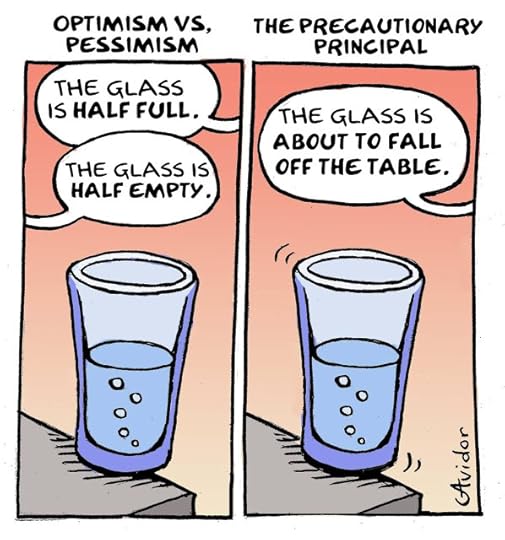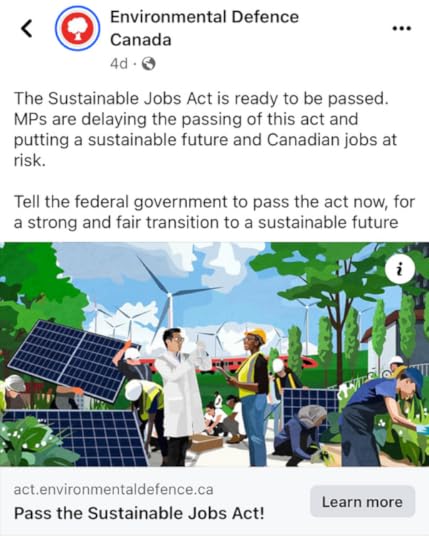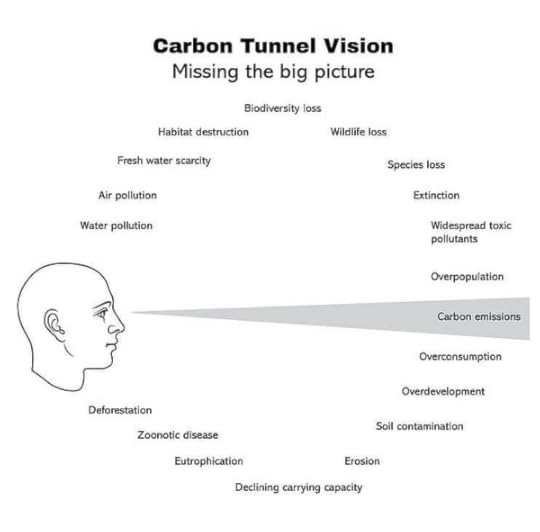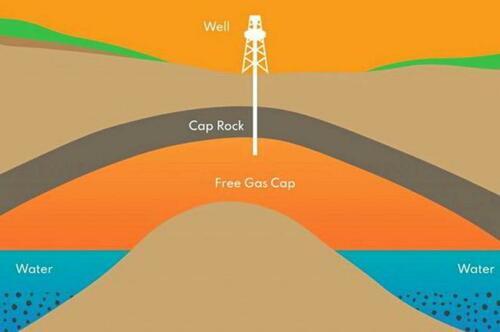Steve Bull's Blog, page 70
March 3, 2024
Today’s Contemplation: Collapse Cometh LXVII–Those Dangerous Complexities of Human ‘Progress’
(originally posted September 16, 2022)
 Tulum, Mexico (1986). Photo by author.
Tulum, Mexico (1986). Photo by author.Those Dangerous Complexities of Human ‘Progress’
Today’s contemplation is a short reflection (and reiteration) on where I believe human ‘energies’ should be focused as we stumble into an unknowable future in light of an article on the topic that was shared to one of the Facebook groups I am a member of via a compilation of related articles periodically distributed by The Collapse Chronicle…
‘Peak humanity’ would appear to have been a direct result of our leveraging of a one-time cache of ancient carbon energy that has afforded us the ability to expand our numbers and environmental impact for quite some time but has, unfortunately, placed us firmly into ecological overshoot — a significant growth far beyond our environment’s ability to support on a continuing basis our numbers and material demands.
Virtually every species that enters such a predicament experiences the ‘collapse’ that inevitably follows once the fundamental resource that has allowed it to blast past its natural carrying capacity is ‘exhausted’ (in the case of fossil fuels, it’s about a declining energy-return-on-energy-invested and the hyper-exploitation of the resource — and others, as well as an overloading of natural sinks — via debt/credit expansion to reduce significantly its future availability).
This impending ‘collapse’ is problematic on a number of fronts but I would contend that it is particularly so because of some very dangerous complexities we have created and distributed around our planet, placing our long-term future and that of many other (all?) species in great peril.
Energy is ‘everything’ to life and the surplus energy we garnered from our exploitation of fossil fuels has led to our hyper-complex and globalised industrial society. Along the way the vast majority of humans have lost the knowledge and skills to be self-sufficient and adapt to a life without fossil fuel energy and its long list of ‘conveniences’. Of particular note should be our dependence upon long-distance supply chains for virtually all our most important needs: food, potable water, and regional shelter materials.
While relocalising these necessary aspects of our existence should be a priority for every community that wishes to weather the coming transition to a post-carbon world, we should be considering quite seriously the safe decommissioning of some significantly dangerous creations.
Three of the more problematic ones include: nuclear power plants and their waste products; chemical production and storage facilities; and, biosafety labs and their dangerous pathogens. The products and waste of these complex creations are not going to be ‘contained’ when the energy to do so is no longer available. And loss of this containment will create some hazardous conditions for human existence in their immediate surroundings at the very least — in fact, multiple nuclear facility meltdowns could potentially put the entire planet at risk for all species[1].
As of today’s date, some 438 nuclear reactors (with another 56 under construction) are spread throughout 32 nation-states[2].
Finding the actual number of chemical production and storage facilities that exist is next to impossible but a proxy of their existence can be imagined via their economics and global spread of the industry[3], and it is massive.
As for biosafety labs, the total number is also virtually impossible to nail down due to the various ‘levels’ assigned, but as for those ‘studying’ the most dangerous pathogens, currently 59 are spread around the globe[4].
These facilities, even with today’s high-energy inputs and safety protocols, have experienced catastrophic ‘accidents’ — at least for the immediate environment/ecological systems, residents of the area, and/or employees.
From Chernobyl and Fukushima[5], to Bhopal and Beirut[6], to numerous lab failures[7] and ‘accidental’ infections and deaths of lab employees[8] (to say little of the recent possibility of Covid-19 having escaped from a lab[9]), the dangers posed by them have periodically been quite obvious.
As our surplus energy to minimise these dangers falls, our ability to protect ourselves from them also declines increasing the risks that they pose substantially. It seems only prudent to decommission and ‘safely’ eliminate the dangers while we still have the energetic-ability and resources to do so.
There is little in our current thinking about this situation that leads me to believe we will address these potential catastrophes, however. In fact, I see significant hubris and denial on a daily basis as we surge headlong in the opposite direction expanding on these complexities for the most part rather than reducing them — to say little of our continuing pursuit of the infinite growth chalice on a finite planet.
The fact that we seem to be doing the exact opposite of what seems prudent and forward-thinking does not instill a lot of confidence in me for our long-term prospects. Our failure to address the potential lethal consequences — primarily, it would seem, because of our continuing belief that we can both predict and control complex systems, and because these pursuits further enrich the ruling elite — raises the stakes significantly for both current and future generations, as well as all other life on the planet.
[1] Here I am reminded of the television series The 100 where the fourth season is centred around the devastation wreaked by a wave of fire and radiation that sweeps across the planet as a result of several dozen of the globe’s nuclear plants melting down; their ongoing maintenance was impossible after a complex AI launches the world’s nuclear weapons arsenal in an effort to address human overpopulation. https://en.wikipedia.org/wiki/The_100_(TV_series)
[2] https://en.wikipedia.org/wiki/Nuclear_power_by_country
[3] https://en.wikipedia.org/wiki/List_of_largest_chemical_producers; https://en.wikipedia.org/wiki/Chemical_industry; https://www.yourarticlelibrary.com/industries/top-10-chemical-producing-countries-of-the-world/25394; https://chempedia.info/info/chemical_production_facilities/
[4] https://theconversation.com/fifty-nine-labs-around-world-handle-the-deadliest-pathogens-only-a-quarter-score-high-on-safety-161777;
[5] https://en.wikipedia.org/wiki/Nuclear_and_radiation_accidents_and_incidents
[6] https://en.wikipedia.org/wiki/Chemical_accident
[7] https://eu.usatoday.com/story/news/2016/06/02/newly-disclosed-cdc-lab-incidents-fuel-concerns-safety-transparency/84978860/; https://www.researchgate.net/publication/340402767_Laboratory_accidents_and_breaches_in_biosafety_-_they_do_occur
[8] https://www.torontomu.ca/content/dam/facilities-management-development/environmental-health-safety/docs/2-biological-hazard-classification.pdf
[9] https://www.bmj.com/content/374/bmj.n1656; https://theintercept.com/2022/05/06/deconstructed-lab-leak-covid-katherine-eban/
Ignorance, Hubris, and Stupidity
 Artwork from Ken Avidor
Artwork from Ken AvidorAs I frequently point out, we face a series of predicaments all brought to us as a result of our own behavior of using technology, which has produced the predicament of ecological overshoot. When a species goes into overshoot, it always faces the same outcome: collapse. There is quite literally no way to avoid this; it is baked into cake, so to speak. I frequently hear people talk about avoiding collapse to which I can only chuckle and explain that attempting to avoid collapse and extend civilization is a fool’s errand because all this does is steepen the Seneca Cliff once the ability to extend civilization dries up. Civilization exists upon the surplus energy provided by technology use such as that furnished through agriculture; this then provides the ability of humans to develop permanent settlements which is the beginning of a civilization. Sadly, civilizations are unsustainable and each one that has ever come into being has also collapsed. Today’s civilization is no different and there will never be a sustainable civilization. Talk of such ideas is no different than “sustainable” development or “green” growth (see greenwashing).
I genuinely want people to understand the truth about where we are within these systems and predicaments and what can and cannot be done about them. Most people’s responses are fueled by a desire to “fight” one of the symptom predicaments such as climate change or energy and resource decline. Sadly, a considerable number of those folks read or hear something about stopping or reversing climate change or emissions or any other symptom predicament and get the incorrect idea that this is actually possible…
…click on the above link to read the rest…
Telling the Truth About Our Future

Renewable energy is a poor substitute for fossil fuels. That’s because renewables are a diffuse form of energy and produce power only about one-third of the time.
That doesn’t stop renewable energy true-believers from trying to bend the laws of physics to tell a story that’s not true. EROI** (energy returned on energy invested) was used in this way by Murphy et al in 2022 and more recently, by Delannoy et al in late 2023.
Louis Delannoy and twenty-one co-authors proclaimed the good news in November that there is now a consensus that renewable energy is cheaper and more efficient than fossil fuels.
“The EROI of fossil-fueled electricity at point of end use is often found to be lower than those of PV, wind and hydro electricity, even when the latter include the energy inputs for short-term storage technologies.”
Emerging consensus on net energy paves the way for improved integrated assessment modeling
That’s not true. There is great uncertainty about EROI and a range of net energy values for every type of energy source. It’s a blunt instrument at best. It requires knowing an unknowable array of complex inputs and outputs to be anything more than a high-level guess.
First, let’s examine the easy part of their statement—“including storage technologies.” Lazard’s latest data shows that wind and solar are the most expensive forms of electric power once backup storage is included. Cost and EROI are not the same thing but they are related so it’s a red flag that Delannoy et al’s statement may be untrue.
The reference for their claim is a 2020 paper by one of the co-authors about modeling carbon emissions in California that included simulations for future solar PV EROI . California is not the world, forward modeling is not historical data, and solar PV is not the renewable universe.
…click on the above link to read the rest…
February 29, 2024
From Trucker Boycotts To Grid Down – There’s Only One Way To Survive A Food Crisis

If there is one reality that Americans need to accept, it’s that every system has a breaking point and there are no exceptions. Human beings are built to adapt and this has given us incredible resilience, but it also means we have a tendency to wait too long to fix the parts of our society that are broken. Instead, we let the problems build and fester until, sadly, the final straw falls and everything comes crashing down.
Sometimes this collapse is by chance and sometimes it’s by design. In either case the catalyst is the same – The public does not prepare and they don’t take action to correct the people creating the crisis until it’s too late.
In our modern era of invasive technology, economic weakness, nuclear weapons and biowarfare, this is an unsustainable model. We can no longer ignore threats on instability in the hopes that they will go away or that governments will defuse the danger, nor can we simply pick up the pieces over and over again after each calamity. There may come a time when the mess is so big we won’t be able to clean it up. People must plan ahead, and they must stop tolerating the notion of passive involvement in the mechanisms that influence their lives and future.
I write often about hypothetical trigger events and breakdown scenarios because a large number of people still need to be educated on how fragile the western world truly is right now. For example, any significant disruption to supply chains and logistics at this time would be devastating for a large number of Americans (or Europeans).
…click on the above link to read the rest…
Record Global Debt: A Ticking Time Bomb for the World Economy
The relentless increase in global debt is an enormous problem for the economy. Public deficits are neither reserves for the private sector nor a tool for growth. Bloated public debt is a burden on the economy, making productivity stall, raising taxes, and crowding out financing for the private sector. With each passing year, the global debt figure climbs higher, the burdens grow heavier, and the risks loom larger. The world’s financial markets ignored the record-breaking increase in global debt levels to a staggering $313 trillion in 2023, which marked yet another worrying milestone.
In the Congressional Budget Office (CBO) projections, the United States deficit will fluctuate over the next four years, averaging an insane 5.8 percent of GDP without even considering a recession. By 2033, they still expect a 6.9 percent GDP budget hole. Unsurprisingly, the economy, even using optimistic scenarios, stalls and will show a level of real GDP growth of 1.8% between 2028 and 2033, 33% less than the 2026–2027 period, which is already 25% lower than the historical average.
Some analysts say that this whole mess can be solved by raising taxes, but reality shows that there is no revenue measure that will fill an annual financial hole of $2 trillion with additional yearly receipts. This, of course, comes with an optimistic scenario of no recession or economic impact from a higher tax burden. Deficits are always a spending problem.
Citizens are led to believe that lower growth, declining real wages, and persistent inflation are external factors that have nothing to do with governments, but this is incorrect. Deficit spending is printing money, and it erodes the purchasing power of the currency while destroying the opportunities for the private sector to invest. The entire burden of higher taxes and inflation falls on the middle class and small businesses.
…click on the above link to read the rest…
February 27, 2024
Today’s Contemplation: Collapse Cometh CLXXVIII–Magic Permeates Our Thinking About ‘Solutions’
 Knossos, Greece (1993). Photo by author.
Knossos, Greece (1993). Photo by author.Magic Permeates Our Thinking About ‘Solutions’
A few brief Facebook conversations I have had the past couple of days while I work on a longer Contemplation regarding binary thinking, particularly as it applies to sociopolitics.
The first shared this article featuring a picture of a massive ‘agrivoltaic’ project and entitled Sheep may soon graze under solar panels in one of Wyoming’s first ‘agrivoltaic’ projects.

My comment: All I can see is a shitload of ecological destruction in the wake of producing all those solar panels…all in the name of attempting to sustain the unsustainable.
GH: Steve Bull, it was never going to work burning 13 billion tonnes of coal oil and gas per year to keep the lights on . With at least another 2 billion people to add to the global population and up grade the remaining 80 per cent of the population to 1st World comfort
Me: GH, Nope, and all chasing ‘renewables’ is doing is exacerbating our ecological overshoot predicament.
GH: Steve Bull, i got no answers
Me: GH, There are none except what Nature has in store. The best our species can hope for is community mitigation/adaptation via relocalisation.
MC: Steve Bull, “Community mitigation/adaptation via relocalization”… Almost a bumper sticker… Thanks for that. I believe you are correct sir… How do we get on with this and how far can it be scaled up to include how many of us and how soon before the rest of us turn into a mob of armed hungry savages (strategy suggestions do not need to be pre-approved by ideologue peers and browbeaters [not that I notice that many in this in this group] and would be most welcome)…
Me: MC, I don’t have any suggestions beyond what I began last year: a community food gardening guild. Most people don’t want to hear the hard ‘facts’ on our predicament so I don’t discuss them with community members. Getting neighbours to begin and expand food gardening is the best I can offer in my suburban community on the outskirts of the sprawling city of Toronto. I do try to raise awareness of the insanity of pursuing the perpetual growth chalice by our politicians but, again, most people dismiss the notion so I do it infrequently.
TE: Steve Bull, and then a hailstorm hits and destroys the solar panels in about 3 minutes. Nice greenwash for intensive industrial agriculture tho
GH: TE, new panels have hail ratings .. although i see ( from reports ) hail is increasing in size
This second conversation is based upon this post:

My comment: There is nothing ‘sustainable’ about the complex, industrial products pictured here.

RH: Steve Bull, In this particular usage it means having energy forms that are renewable as opposed to those that are in the process of making life very hard if not impossible for a large percentage of the inhabitants of the world. You will notice for example that some of the people portrayed are growing plants.
Me: RH, Non-renewable, renewable energy-harvesting technologies are not sustainable and contribute to a host of ecologically-destructive processes, just as detrimental to the world’s inhabitants as hydrocarbons are. To say little of the fact that they depend significantly on hydrocarbon-based resources up and down their production and supply chains. Because of carbon emissions tunnel vision, these products are perceived as ‘clean/green’ but are nothing of the sort. They do zero to address our fundamental predicament of ecological overshoot. In fact, since ‘renewables’ have been additive to our energy use, there is a good argument to be made that our pursuit of them is simply exacerbating our predicament. Until we can stop our expansion/growth of both population and resource extraction/use, and reduce our energy/resource demands (significantly), then all the chatter about an ‘energy transition’ is just noise to help reduce our cognitive dissonance (and produce/sell more ecologically-destroying industrial products).

RH: Steve Bull, A significant part of the drive for sustainability is simply the reduction of wasteful uses of energy. And it isn’t simply chatter, there is a a lot of jobs and economic development involved in making our society more efficient.
Incidentally, there is now enough solar, wind, small hydro, geothermal, and other renewables on stream now to cover the energy requirements of producing additional similar energy systems right up to and including getting rid of fossil fuels.
While there may be some environmental advocates who see with tunnel vision, it isn’t nearly the number of fossil fuel cranks who have had the blinders on, concerning the impacts on all the cartoon categories mentioned, for decades.
Me: RH, We will have to agree to disagree. You may wish to read this latest piece by physicist Tom Murphy. https://dothemath.ucsd.edu/2024/02/inexhaustible-flows/
RH: Steve Bull Yeah, I have seen some of those before, the death by hockey sticks was a new one. Other than saying what we are doing in terms of our fellow mammals, is not sustainable, how does it relate to the jobs bill?
Me: RH, It’s about sustainability and creating “…lots of jobs and economic development…” are the exact opposite of what sustainability requires. We need degrowth.
RH: Steve Bull, I wouldn’t say it is the exact opposite, but rather part of a direction that we need to compromise on with respect to other factors like a just transition, conservation, land use, and economics.
GW: RH, bs
And, finally, this one posted by PW to the Peak Oil Facebook Group I am a member of:

SD: Ladies and gentlemen the future https://youtu.be/_3P_S7pL7Yg?si=n7C4Jg-bcrev-sEA
PW: SD, 



 …..we can’t even afford the infrastructure!!!
…..we can’t even afford the infrastructure!!!
SD: PW, not really that expensive. Overhead wires for trolleys and busses were very common in the first half of the 20th century (1900s to 1950s.) The only reason they disappeared was because diesel became cheaper. But those days of cheap diesel are gone, and it wouldn’t take much to get the wires up again. In fact, it would create a lot of jobs. The only thing that is needed is the demand (electric trucks with cable attachments) and coordinated infrastructure development (government.) It’s the only solution.
PW: Here’s additional data of why the electric trolleys and other forms of transportation went out of business. Although GM was acquitted I feel that they somehow beat the charges with bribery and other means. You make it seem that the switch to electric as like hanging drapes. There is no solution. https://en.wikipedia.org/wiki/General_Motors_streetcar_conspiracy
Me: SD, Magical thinking solves everything.
SD: Steve Bull what’s magic about technology?
Me: SD, The idea that we have the resources (mineral and energy) to try and scale up to anywhere near replacement levels, that this can be done without further ecological systems destruction, that it can be accomplished without putting us further into ecological overshoot, and that we have the economic capacity to do this (because what’s a few quadrillion more in debt/credit?) are just a few examples off the top of my head of the magical thinking necessary to have complex industrial technology help to ‘solve’ anything in our future. Such thinking is simply exacerbating our predicament.
PW: Steve Bull, Instant Magical solutions sold here. https://www.britannica.com/art/deus-ex-machina
PS: Steve Bull, Yes, a concise summation of . . . the coming apocolypse
February 21, 2024
The 2030 Agenda: The Totalitarian Trojan Horse
Upon perusing the 17 UN Sustainable Development Goals included in the well-known 2030 Agenda, one may conclude that they are all harmless and entirely reasonable goals. Who could be opposed to reducing poverty and hunger or advancing infrastructure, innovation, and industry? The trick, akin to the tale of the Trojan Horse, is that those goals have been appropriated by the most heinous interventionism, and bureaucrats with a foundation of conceit and stupidity use it to impose governmental control over every aspect of the economy. They are attacking farming, agriculture, and nearly any private activity in a Europe that is beginning to resemble a society suffocated by a predatory state and zombies close to the government, à la Chapter 9 from Ayn Rand’s “Atlas Shrugged.” First, they destroyed the very industry that the 2030 Agenda is purportedly committed to strengthening.
The most interventionist politicians are really attacking the 2030 Agenda because, despite their pretenses to the contrary, their policies invariably have the opposite effect of what they seem to support. The socialists in all parties have taken over the 2030 Agenda, which does not advance industry, growth, equality, or the fight against poverty or hunger.
This exploitation of the 2030 Agenda’s objectives is exactly like the Trojan Horse that conceals people who will destroy the city beneath the guise of an impressive and lovely gift.
The number of farms in the European Union has drastically decreased in recent years. According to Eurostat, there were 9.1 million farms in 2020, a projected 37 percent decrease, or roughly 5.3 million fewer than in 2005. This trend has only worsened since 2020.
According to the European Commission itself, the EU’s agricultural land is predicted to shrink by 1.1 percent between 2015 and 2030, primarily due to the declines of the two main groupings (agricultural land and farming), which are forecast to decline by 4.0 percent and 2.6 percent, respectively. This implies ruining our future and increasing Europe’s dependence and poverty.
…click on the above link to read the rest…
‘Do not play with fire’ Yemen warns EU as Brussels embarks on Red Sea mission
EU warships have set off for the Red Sea, where the US navy is waging its largest conflict since the end of WWII in support of Israel
 (Photo Credit: Getty Images)
(Photo Credit: Getty Images)A high-ranking Yemeni official has warned the EU against “supporting the American devil to protect [Israel]” following the formal launch of the Aspides naval mission in the Red Sea.
“For Europeans, do not play with fire. Take a lesson from Britain,” Mohammed Ali al-Houthi, a senior member of Yemen’s Supreme Political Council, said via social media on 20 February.
“You do not need the support of the American devil in protecting the occupying entity so that it can exterminate the people of Gaza with no disturbance,” Houthi added, stressing that “international navigation is safe.”
His message followed an announcement by Brussels of the official launch of the EU naval operation codenamed Aspides – Greek for shield.
“I welcome today’s decision … Europe will ensure freedom of navigation in the Red Sea, working alongside our international partners. Beyond crisis response, it’s a step towards a stronger European presence at sea to protect our European interests,” European Commission President Ursula von der Leyen said via social media.
France, Germany, Italy, and Belgium have said they will contribute ships to the EU mission in support of Israel.
The bloc’s top diplomat, Josep Borrell, described the mission as “bold action to protect the commercial and security interests of the EU and the international community.”
With a mandate initially set for one year, Aspides will see the deployment of EU warships and airborne early warning systems to the Red Sea, the Gulf of Aden, and surrounding waters. According to officials in Brussels, the mission will be exclusively defensive, and its forces will not partake in US-led attacks against Yemen.
…click on the above link to read the rest…
Exxon Threatens to Take Billions of Dollars in Climate Investment Out of the EU
Exxon has warned the European Union that it will leave and take billions of dollars in climate investment with it unless Brussels makes it easier to spend those billions on transition-related projects.
The Financial Times cited the company today as saying that there was way too much red tape in the EU and it took too long to get a project going, which prompted the supermajor to consider spending its $20 billion in decarbonization investments for 2022-2027 elsewhere.
“When we make investments, we’ve got very long time horizons in mind. I would say that recent developments in Europe have not instilled confidence in long-term, predictable policies,” Karen McKee, president of Exxon Product Solutions, told the FT.
“What we’re experiencing is the deindustrialisation of the European economy and we’re concerned,” McKee also said.
The European Union’s leadership has promised time and again it will facilitate transition projects but it seems it has been slow to act on this promise. According to Exxon—and a lot of other companies involved in the transition—getting a project off the ground in the EU is fraught with regulatory obstacles and “slow and torturous” permitting and funding procedures, per Exxon’s McKee.
The EU’s Green Deal plan features a “predictable and simplified regulatory environment” as one of its four pillars but judging from the reactions of the business world, this has yet to go from theory to practice. Faster access to funding is the second pillar in the EU’s lineup but that, too, is taking quite long to materialize.
It is these delays in implementation that have prompted business leaders to meet today in Belgium to press the EU leadership into going from words to actions. There is growing concern that the regulatory burden put on businesses is scaring them away, taking investments elsewhere.
There are also some European leaders, notably France’s Emmanuel Macron and Belgium’s Alexander de Croo, who have blamed red tape for the farmers’ protests.
World On Threshold Of Natural Hydrogen “Gold Rush,” Geologists Say
Speaking this weekend at a Denver meeting of the American Association for the Advancement of Science, geologists heralded a coming, game-changing surge in mankind’s harvesting of a resource long thought impractical to collect: naturally-occurring or “geologic hydrogen.”
The scientists provided a first look at the findings of an as-yet-unpublished study performed by the US Geological Survey (USGS). The key takeaway: naturally-occurring hydrogen is far more abundant near the Earth’s surface than previously known. Researchers say the planet holds upwards of 5 trillion tons of hydrogen, trapped in underground pockets.
“Most hydrogen is likely inaccessible, but a few percent recovery would still supply all projected demand — 500 million tons a year — for hundreds of years,” said Geoffrey Ellis, a USGS research geologist, as reported by the Financial Times. The supply has gone largely unnoticed due to scientists’ earlier assumptions about how natural hydrogen is formed and how it’s degraded. “We haven’t looked for hydrogen resources in the right places with the right tools,” said Ellis.
Better-equipped and more enlightened, geologists are discovering hydrogen reserves in many places, including a chromite mine in Albania from which 200 tons are flowing every year.

Today, hydrogen used as a fuel or industrial material is primarily produced by chemically altering gas principally composed of methane. When resulting carbon emissions are captured, the product is called “blue hydrogen.” When they’re not, it’s called “grey hydrogen.” In 2022, grey hydrogen accounted for 92% of the hydrogen market by value. “Green hydrogen,” which results when water molecules are split via electrolysis in a process powered by renewable energy, is still marginal.
Naturally occurring geologic hydrogen is called “gold hydrogen,” and the geologists say it has a better ecological-impact profile than blue or even green hydrogen: Electrolysis requires a large amount of electricity.
…click on the above link to read the rest…



